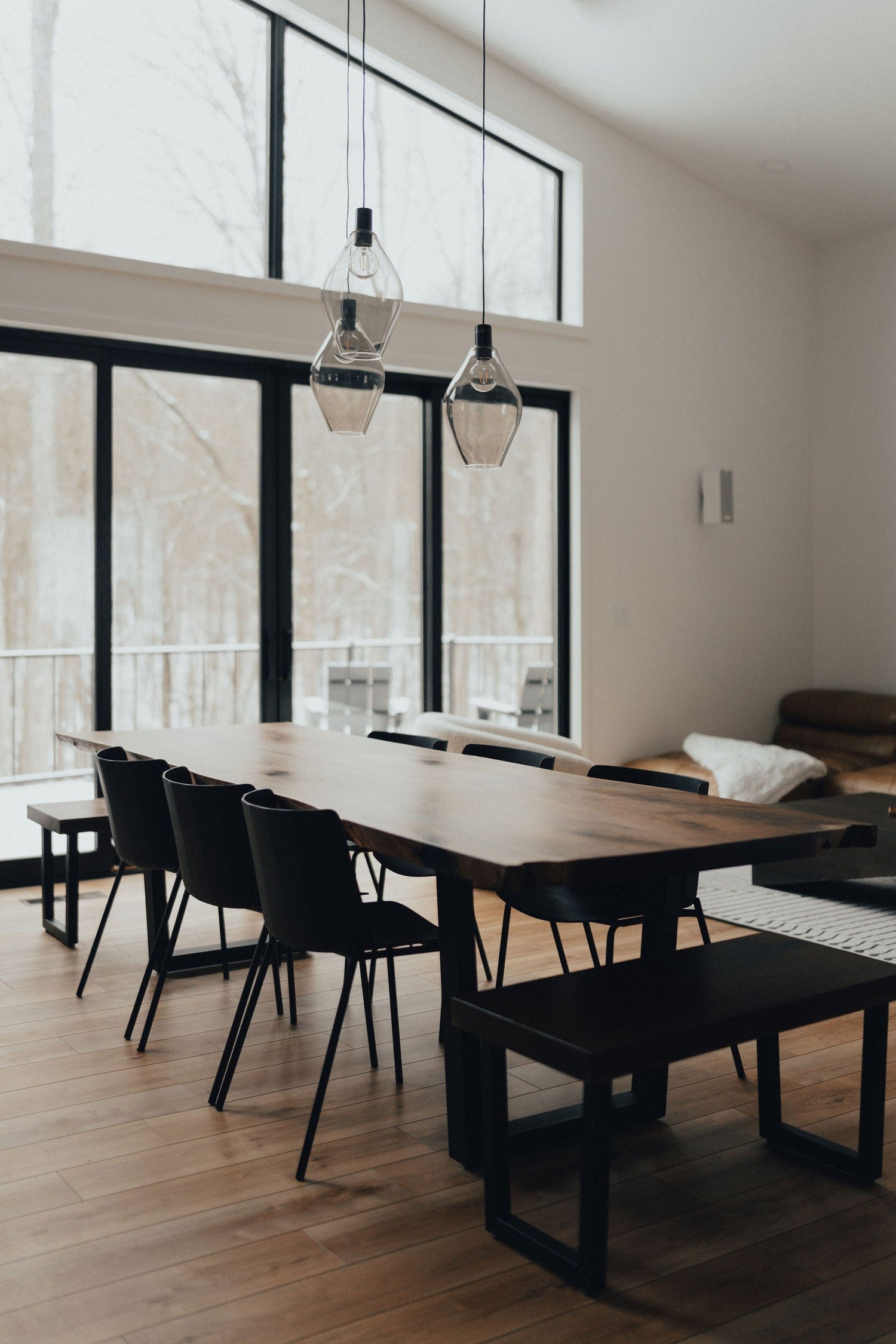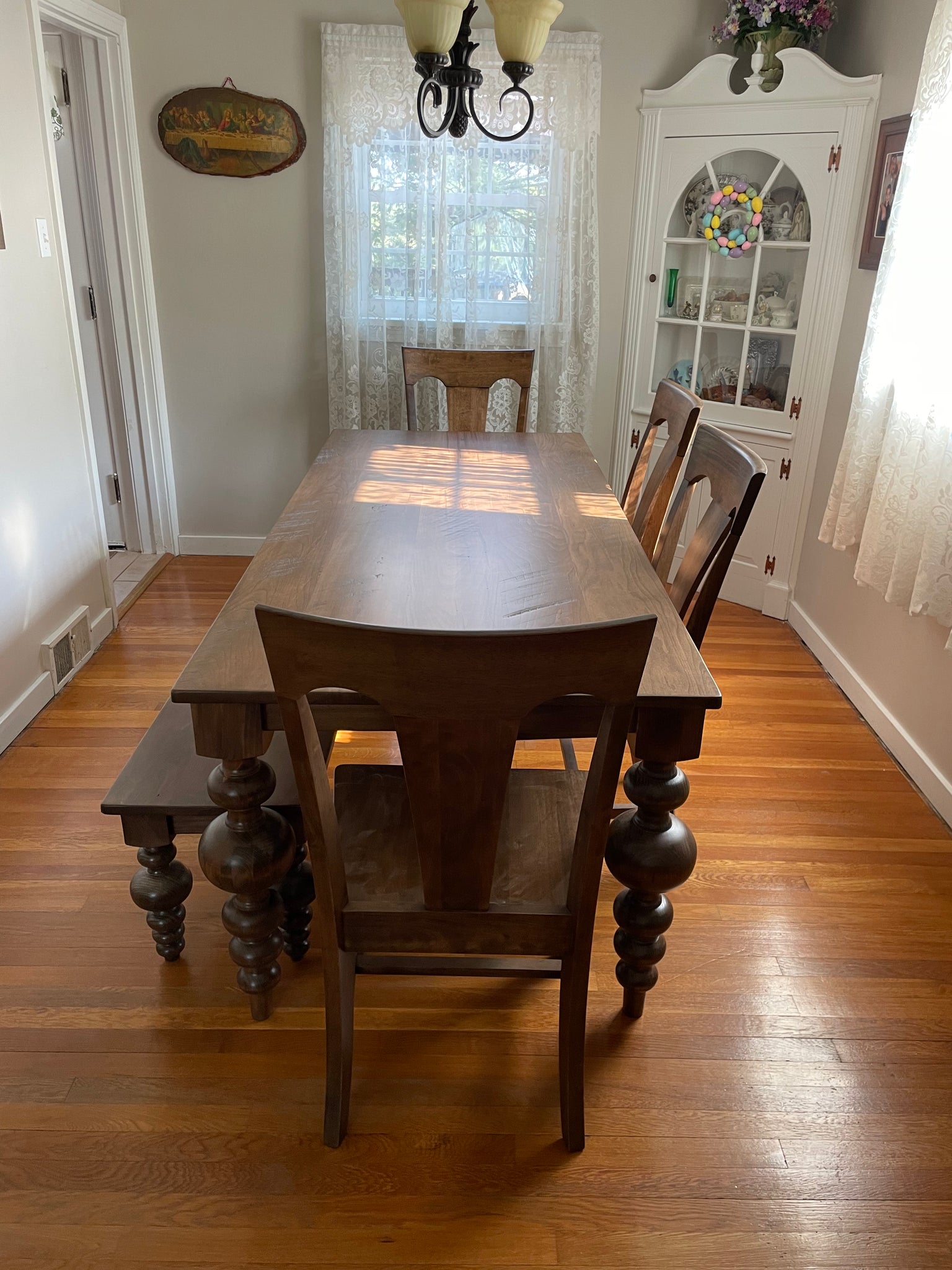From Conventional to Modern: Find the Perfect Dining-room Table Legs for Your Style
While traditional layouts such as cabriole and turned legs evoke a feeling of classic elegance, contemporary designs like barrette and geometric options provide a possibility for striking aesthetic interest. As you think about these components, the inquiry remains: exactly how can you effortlessly incorporate these varied leg designs to create a harmonious dining experience?
Recognizing Table Leg Styles
The selection of eating area table leg designs can significantly affect both the appearances and performance of the area. Each leg style contributes special practical functions and aesthetic components, accommodating diverse design preferences and usage requirements. Understanding these designs is essential for choosing the appropriate table that lines up with your total interior design vision.
As an example, conical legs use a clean, timeless appearance that can boost an area's sophistication, while stand bases offer security and make best use of legroom, making them excellent for smaller areas. Barrette legs, a trademark of mid-century modern-day design, introduce a commercial panache, enabling a ventilated, open feeling. Similarly, trestle legs stimulate rustic charm, providing durable support and a sense of timelessness.
In addition, the selection of products plays a substantial role. Wood legs can bring warmth and structure, whereas metal options often communicate a sleek, contemporary ambiance. Ultimately, recognizing table leg styles is vital for developing a cohesive dining area that shows personal style while making certain functionality and convenience. By attentively considering these elements, you can enhance both the aesthetic and functional charm of your eating room.
Typical Table Leg Options
When selecting dining area table legs, traditional options commonly personify classic beauty and craftsmanship. These styles show an abundant heritage and a dedication to top quality, making them perfect for those who value timeless visual appeals.
One of the most renowned standard leg designs is the cabriole leg, defined by its stylish bent form. This style usually includes attractive makings and is most commonly located in Queen Anne and Chippendale furnishings. An additional popular option is the turned leg, which boasts a series of smooth, rounded forms that provide a traditional appearance while preserving stability.
Moreover, the straight leg, while basic, uses a unadorned and durable structure that can blend flawlessly with a selection of tabletop designs. For those attracted to ornate outlining, claw-and-ball feet legs evoke a feeling of majesty and can offer as a sensational centerpiece in any dining room.
Finally, pedestal bases, although not strictly legs, give an alternate conventional option that permits enough legroom and can be magnificently carved. Each of these traditional leg designs contributes to the overall setting of a dining room, weding function with visual charm.

Modern Table Leg Layouts
Modern table leg styles supply a varied series of designs that emphasize tidy lines and innovative products. These styles frequently focus on functionality while functioning as striking centerpieces within a dining room. Minimalist appearances prevail, with legs crafted from products such as metal, glass, and crafted timber, which add to a ventilated and modern feeling.
One popular style is the barrette leg, characterized by its slim, conical structure that supplies security without frustrating the table top (dining room table legs). This style is usually found in mid-century contemporary furnishings and can effortlessly match different eating table from this source shapes. One more fad is using geometric shapes, where legs may handle asymmetrical or angular types, including aesthetic interest and a touch of creativity

Mixing Designs for One-of-a-kind Rooms
Usually, home owners look for to produce distinct dining rooms that mirror their personal style by mixing numerous style elements. This approach permits the unification of diverse looks, leading look at here to a harmonious yet distinct atmosphere. Pairing a rustic wood table with sleek, modern-day steel legs can create an eye-catching comparison that elevates the area's general allure.
Furthermore, integrating vintage table legs with modern tabletops can stimulate a sense of background while maintaining a contemporary sensibility. Such mixes not only display individual preference but likewise encourage imagination, allowing house owners to curate a space that feels both individual and inviting.
Shade plays an essential duty in this blending procedure; picking table legs that match or comparison with the existing color plan can boost visual rate of interest. Whitewashed legs can soften the daring of a dark table surface area, creating a well balanced aesthetic.
Tips for Picking the Right Legs
Selecting the right table legs is necessary for achieving both performance and visual allure in your dining space. Begin by thinking about the general style of your space. Traditional settings benefit from legs that include detailed makings or turned designs, while contemporary areas might ask for sleek, minimalist styles.
Next, examine the elevation and security of the legs. dining room table legs. Standard dining tables range between 28 to 30 inches in height, so make sure the legs enhance this dimension for convenience. In addition, durable products, such as wood or steel, can enhance security and long life
Examine the leg shape also-- choices consist of right, tapered, or stand layouts. Straight legs offer a classic look, while tapered legs can add a touch of elegance. Pedestal bases offer sufficient legroom and are Discover More suitable for smaller sized areas.
Final Thought
In summary, selecting the excellent eating room table legs calls for cautious consideration of both traditional and modern-day styles. By integrating leg style, elevation, and product with the overall decor, a cohesive and welcoming environment can be attained.
The range of eating space table leg styles can dramatically influence both the visual appeals and capability of the area. Inevitably, comprehending table leg designs is necessary for creating a natural dining area that mirrors personal design while ensuring functionality and convenience.One of the most renowned typical leg styles is the cabriole leg, defined by its stylish curved form. Straight legs offer a traditional appearance, while conical legs can add a touch of sophistication.In recap, choosing the excellent dining space table legs calls for careful factor to consider of both conventional and contemporary styles.